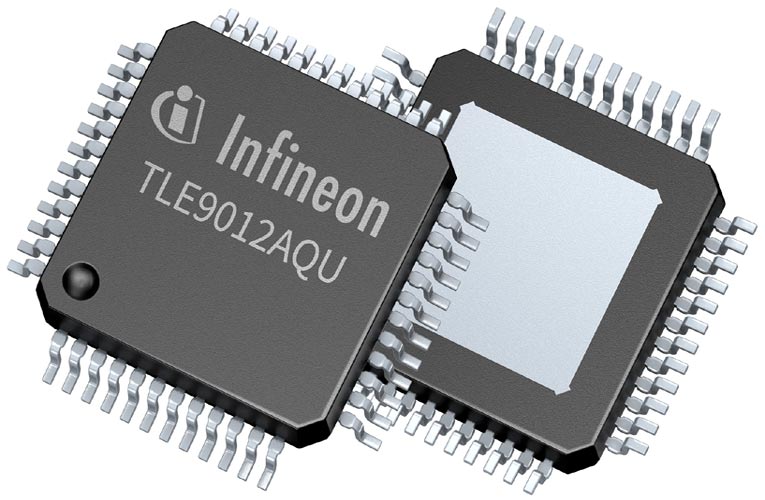
Infineon Technologies AG has expanded its product offering for Battery Management System (BMS) with the TLE9012AQU a new sensing and balancing IC that is designed for batteries in hybrid and electric cars and other applications. It can measure the voltage in up to twelve battery cells with an accuracy of ± 5.8 mV over the entire temperature and voltage range as well as the operating life cycle. By supporting up to five external temperature sensors, the device provides an integrated cell balancing function and uses an iso-UART interface for communication.
The BMS helps optimally utilize the battery capacity so that it operates for the longest possible range in an electric car, it also makes sure that the battery does not age prematurely. It is also used to determine the battery’s state of charge and state of health to estimate the available range and remaining service life. The TLE9012AQU helps in providing necessary measurement data and ensures a balanced state of charge through cell balancing.
Cell balancing is achieved through twelve balancing switches integrated on the chip- one per channel. They are designed for currents up to 150 mA and if there are higher balancing currents, the device can also support external switches. The cell balancing can be programmed to stop without a signal from the microcontroller after a defined time of up to 32 hours or when the cell has reached a defined voltage so that the microcontroller switches to sleep mode for saving energy.
A programmable noise filter is being used in the balancing IC to minimize the influence of interfering signals on the measurement results. To get comparably even results, the measurement is taken in all cells simultaneously. Long-term stability of measurement is maintained with the help of the compensation algorithm with an integrated stress sensor and extended temperature compensation.
The TLE9012AQU is suitable for batteries that are partitioned with twelve cells per module, as it has twelve channels. The iso-UART interface for data exchange between these modules and with the microcontroller allows easy voltage isolation and ensures data integrity. It has 20 serially connected devices and a ring topology for communication so that the communication isn’t broken even if any one of the devices failed.

